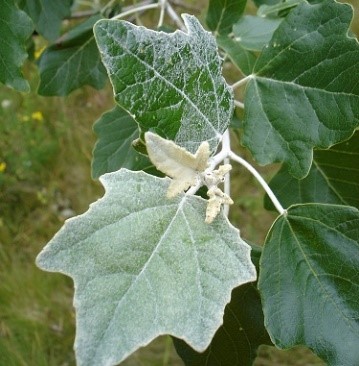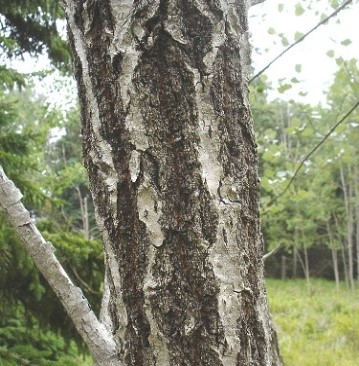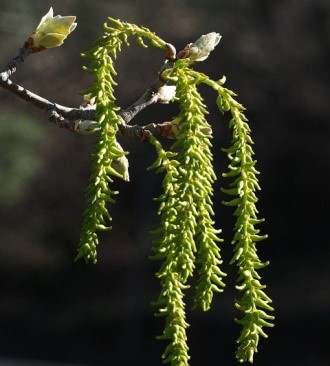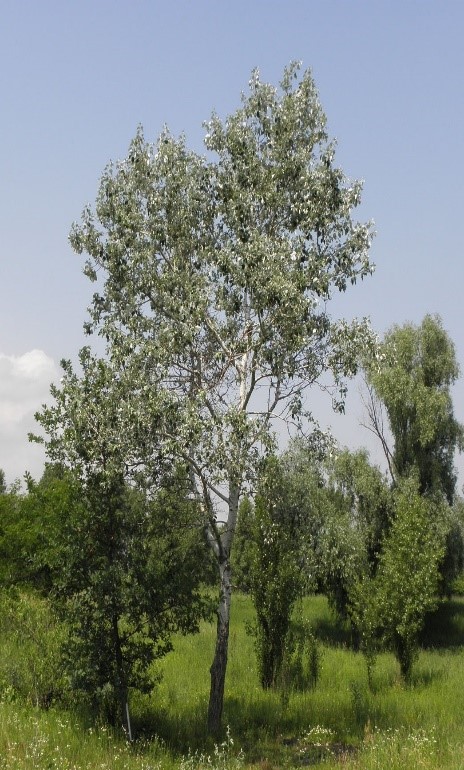Trees
Populus alba L.
Populus alba L.
Description :
This plant is a medium sized deciduous
tree that grows to the heights of about 15 to 30m. The trunk is up to 2 m in
diameter. The bark is greenish white and smooth in young trees and blackish and
fissured in old trees. It also propagates by means of root suckers growing from
the lateral roots, often as far as 20 to 30 m from the trunk, to form extensive
clonal colonies. The leaves are small and 5 to 15cm long, five lobed, with a
thick covering of white scurfy down on both sides, but thicker underneath; this
layer wears off 8 cm long, produced in early spring; they are dioecious, with
male and female catkins on separate trees; the male catkins are grey with
conspicuous dark red stamens, the female catkins are greyish green. The female
catkins lengthen to 8 to 10 cm after pollination, with several green seed
capsules, maturing in late spring to early summer.
Distribution :
It is native central Europe and central Asia. It can also be found in
Pakistan and India. It grows in moist sites, often by watersides, in regions
with hot summers and cold to mild winters. It prefers sandy, loamy and clay
soils. It Favours well-drained soil. It cannot grow in the shade. It prefers
dry or moist soil. The plant can tolerate maritime exposure.
Uses :
It has both edible and medicinal uses.
Leaves are rich in vitamins specifically vitamin C. Inner bark is usually dried
and grounded into a powder and added into flour to make bread. The bark is used
in the manufacturing of locally made aspirin.
(Rushforth, 1999)



